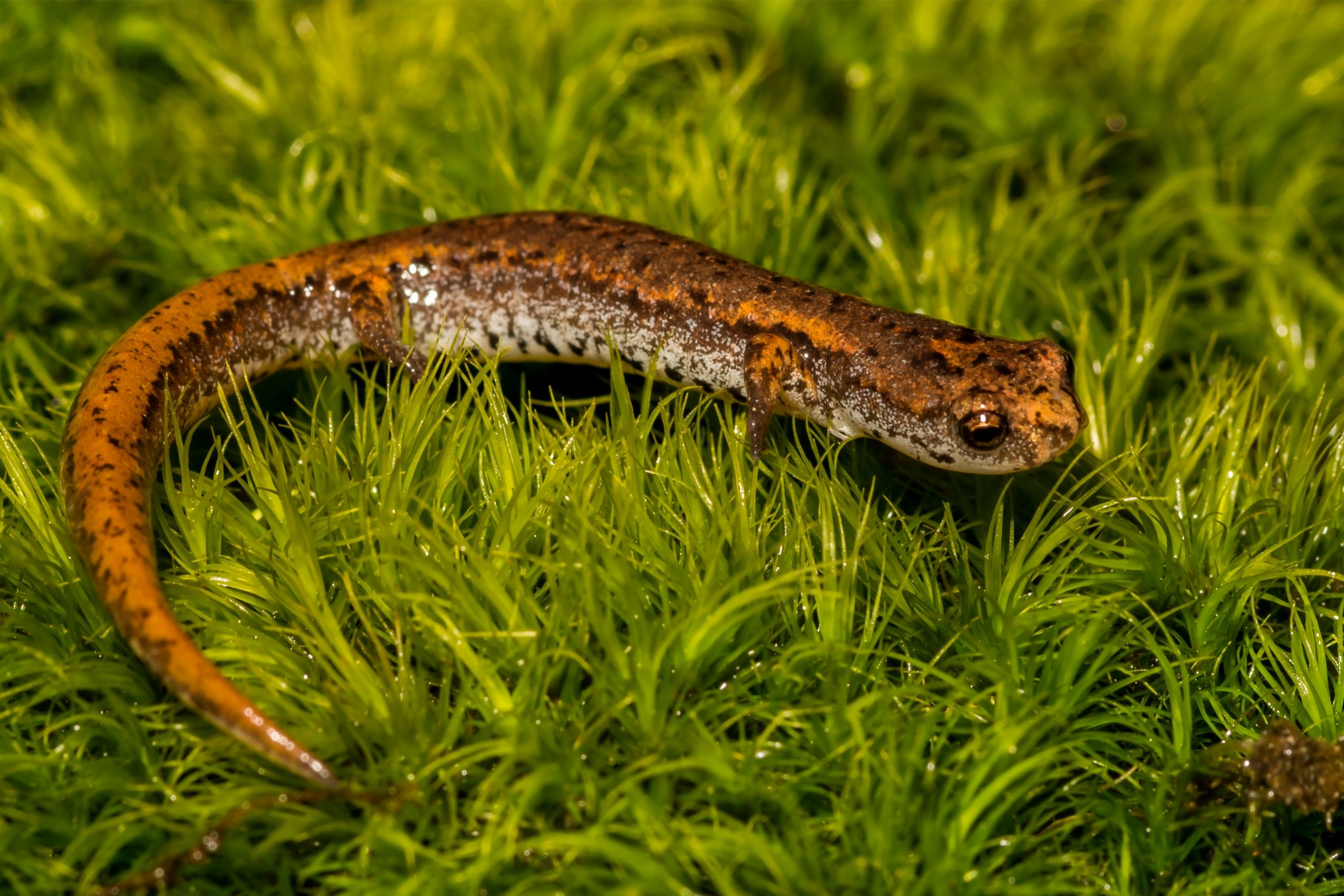Four-toed salamander
(Hemidactylium scutatum)

Description
The four-toed salamander (Hemidactylium scutatum) is a lungless salamander native to eastern North America. It is the only species of the monotypic genus Hemidactylium. The four-toed salamander can be recognized by its white underbelly sprinkled with black dots. Its back varies from orange-brownish to red-brownish; its flanks are grayish. The body and the limbs are elongated. The snout is short, and the eyes are prominent. The tail color is usually brighter than the back, and you can observe a constriction at the body/tail junction. The posterior limbs have four toes (hence its name), a good identification criterion but hard to use in the field. This species rarely exceeds 10 cm (3.9 in) in length. The sexes are alike except for the shape of the head. Males have elongated and almost square snouts, whereas the females' snouts are short and round. The juveniles show a tail shorter than the body. Ventral surface is brilliant white, with scattered black spots The four-toed salamander can be easily mistaken for the redback salamander (Plethodon cinereus) in the wild. The Four-toed salamander's underbelly is more of a "salt and pepper" color. There is no constriction at the tail, and posterior limbs show five digits. Mating occurs in terrestrial areas throughout the autumn months. In early spring the females nest on land, along the banks of small ponds. After the 4–6 week embryonic period, the larvae hatch and make their way to the adjacent pond. Four-toed salamanders undergo a relatively short aquatic larval period, when compared to other species of the same family, ranging between 3 and 6 weeks. The four-toed salamander has three main forms of self-defense against predators. The first is that it purposely sheds off its tail to distract the enemy. When the tail comes off, it is still wiggling around. The enemy gets distracted, giving the salamander time to get away. The second form of defense is playing dead. When threatened, this salamander will have a short burst of violent thrashes and then stop dead in its tracks. It will stay frozen like this until it feels the threat is gone (Sass and Anderson, 2011). The third and final form of defense is curling up and putting its tail on its back, offering it in exchange for its life.
Taxonomic tree:







